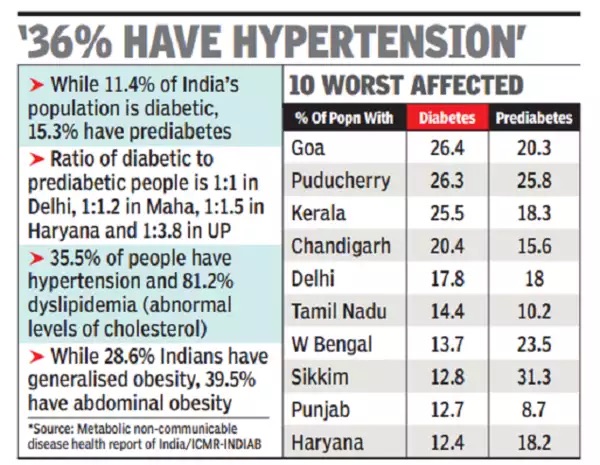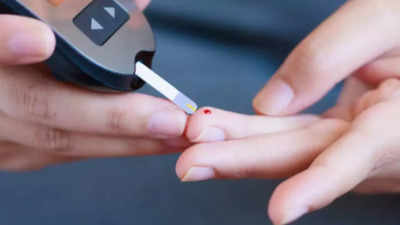According to an ICMR report that was published in the UK medical journal “Lancet,” India has over 101 million individuals living with diabetes, up from 70 million in 2019.
15.3% of the population, or at least 136 million people, have prediabetes in India.
Kerala (25.5%), Goa (26.4%), and Puducherry (26.3%) had the highest rates of diabetes. 11.4% is the national average. However, the study foresees a spike in diabetes incidence in states with lesser prevalence during the following few years, including UP, MP, Bihar, and Arunachal Pradesh.
Scientists have discovered that there are more pre-diabetic persons in states with lower diabetes incidence. For instance, UP has the lowest national prevalence of diabetes (4.8%), yet there are 18% more pre-diabetics than the average of 15.3% in the country.
Are Indians more prone to diabetes?
Since approximately 17% of all diabetes sufferers worldwide reside in India, the country is frequently referred to as the “Diabetes Capital of the World.” In India, there are currently close to 80 million diabetics, and by the year 2045, that number is projected to rise to 135 million.
The main cause of the current exponential growth in diabetes cases in India is ascribed to changes in lifestyle. One of the main causes of increased prevalence is the quick shift in eating habits, together with physical inactivity, increased body weight, notably the buildup of belly fat.
Indians appear to be more likely than Caucasians to get diabetes, despite the fact that the exact causes are unknown.

Due to the shift in diet to include more processed and fast foods, children are developing obesity and metabolic syndrome at an earlier age.
Diabetes is one of the most significant health issues that Indians are battling, despite there being many others. The Covid-19 pandemic amply demonstrated this, with diabetic sufferers suffering harsher consequences, including the feared mucormycosis or black fungus.
With our nation having the largest percentage of diabetes patients in the globe, the sugar disease is currently our nation’s biggest health concern.
Studies on migrant and native Indians as well as the pandemic rise in diabetes in India show that Indians are more predisposed to the disease than other people, which may be because they have a higher hereditary risk for diabetes.
Watch: Here are 12 signs of diabetes that might appear on skin
How to deal with Type 2 diabetes
Diabetes requires a lot of effort and can be detrimental to both your physical and mental health. The good news is that you can take steps to deal so that you can maintain your mental and physical strength.
Type 2 diabetes cannot be cured, but it can be managed and managed well. There isn’t a diabetes management and treatment strategy that works for everyone.
Diabetes patients are experiencing fewer complications and longer, healthier lives. You can also acquire the information, abilities, and support required to successfully manage diabetes with the use of diabetes self-management education and support (DSMES) services.
The key to controlling your blood sugar is eating wholesome foods that are reduced in carbohydrates, added sugars, saturated fat, and sodium (salt). A meal plan that works for you can be created in collaboration with a diabetes care and education specialist. You can still eat a lot of the foods you love and grew up with while managing your diabetes with a few minor adjustments. Likewise, don’t be hesitant to try new meals. If you plan beforehand, you can still serve dessert to those of you who have a sweet craving.
A diabetes diagnosis may cause significant changes in your life. Learning how to manage diabetes on a daily basis will take time.













